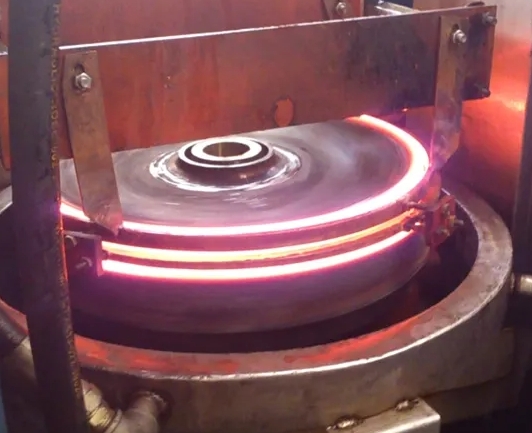- 21
- Jul
Samenvatting van tien veelgebruikte blusmethoden van hoogfrequente blusmachines (1)
Samenvatting van tien veelgebruikte blusmethoden van hoogfrequente blusmachine (1)
1. Single medium (water, oil, air) quenching
Single medium (water, oil, air) quenching: Quenching the workpiece that has been heated to the quenching temperature into a quenching medium to cool it completely. This is a simpler quenching method and is often used for carbon and alloy steel workpieces with simple shapes. The quenching medium is selected according to the heat transfer coefficient, hardenability, size and shape of the parts.
2. Dubbel medium blussen
Dual-medium quenching: The workpiece heated to the quenching temperature is first cooled to the Ms point in the quenching medium of a high-frequency heating machine with strong cooling capacity, and then transferred to the slow-cooling quenching medium to cool to room temperature to achieve different quenching cooling temperatures range, and has an ideal quenching cooling rate. It is used for complex shapes or large workpieces made of high carbon steel and alloy steel, and carbon tool steel is also mostly used in this method. Commonly used cooling media are water-oil, water-nitrate, water-air, oil-air. Generally, water is used as a quick-cooling quenching medium, oil or air is used as a slow-cooling quenching medium, and air is less used.
3. Martensite graded quenching
Martensitische afschrikking: het staal wordt geaustenitiseerd en vervolgens ondergedompeld in een vloeibaar medium (zoutbad of alkalibad) met een temperatuur die iets hoger of lager is dan het bovenste Martens-punt van het staal, gedurende een geschikte tijd bewaard, en de binnen- en buitenzijde delen van het staal worden behandeld. Nadat de laag de gemiddelde temperatuur heeft bereikt, wordt deze eruit gehaald voor luchtkoeling en wordt het onderkoelde austeniet langzaam omgezet in een afschrikproces van martensiet. Het wordt over het algemeen gebruikt voor kleine werkstukken met complexe vormen en strikte vervormingsvereisten, en gereedschappen en matrijzen van snelstaal en hooggelegeerd staal worden ook vaak geblust door deze methode.
4. Martensite graded quenching method below Ms point
Martensitic graded quenching method below Ms point: When the bath temperature is lower than the Ms of the workpiece steel and higher than Mf, the workpiece cools faster in the bath, and the same result as the graded quenching can be obtained when the size is larger. Commonly used for larger size low hardenability steel workpieces.
5. Bainite isothermal quenching method
Bainite isothermal quenching method: The workpiece is quenched into a bath with the lower bainite temperature of the steel at an isothermal temperature, so that the lower bainite transformation occurs. Generally, it is kept in the bath for 30~60min. There are three main steps in the bainite isothermal quenching process: ① austenitizing treatment; ② cooling treatment after austenitizing;

